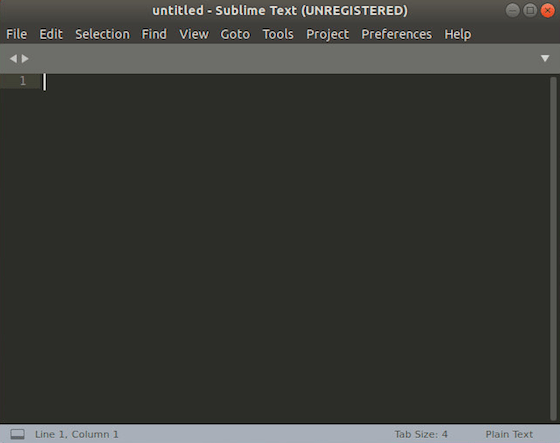How To Install Sublime Text Editor on Fedora 41

In the world of software development, having a powerful and efficient text editor is crucial for productivity and code quality. Sublime Text Editor has emerged as a popular choice among developers due to its speed, versatility, and extensive feature set. For Fedora 41 users, installing Sublime Text can significantly enhance their coding experience. This comprehensive guide will walk you through the process of installing Sublime Text on Fedora 41, exploring various methods and providing valuable insights along the way.
What is Sublime Text Editor?
Sublime Text is a sophisticated text editor designed for code, markup, and prose. It offers a sleek and intuitive interface combined with powerful features that cater to both beginners and experienced developers. Some of its standout features include:
- Multi-select editing
- Command palette for quick access to functions
- Distraction-free writing mode
- Split editing for working on multiple files simultaneously
- Customizable key bindings, menus, and snippets
- Cross-platform compatibility (Windows, macOS, and Linux)
Sublime Text’s popularity stems from its ability to handle large files with ease, its extensive plugin ecosystem, and its highly customizable nature. These attributes make it an excellent choice for developers working on various projects, from small scripts to large-scale applications.
System Requirements
Before proceeding with the installation of Sublime Text on Fedora 41, ensure that your system meets the following requirements:
- Fedora 41 (64-bit) installed and up to date
- At least 2GB of RAM (4GB or more recommended)
- 1GB of free disk space
- Active internet connection for downloading packages
While Sublime Text is relatively lightweight, having a modern processor and sufficient RAM will ensure smooth performance, especially when working with large files or multiple projects.
Pre-installation Steps
To ensure a smooth installation process, follow these pre-installation steps:
- Update Fedora 41:
sudo dnf update -y - Check for conflicting software:Ensure that no other text editors or IDEs are running that might interfere with the installation process.
- Back up existing data:If you’re upgrading from an older version of Sublime Text, back up your user settings and packages to prevent data loss.
Installation Methods
There are three primary methods to install Sublime Text on Fedora 41. Choose the one that best suits your preferences and needs.
Method 1: Using the Official Sublime Text Repository
This method is recommended for users who want to receive automatic updates and easily manage Sublime Text through the system’s package manager.
- Add the Sublime Text repository:
sudo rpm -v --import https://download.sublimetext.com/sublimehq-rpm-pub.gpg sudo dnf config-manager --add-repo https://download.sublimetext.com/rpm/stable/x86_64/sublime-text.repo - Install Sublime Text:
sudo dnf install sublime-text
This method ensures that you always have the latest stable version of Sublime Text and can easily update it using the system’s package manager.
Method 2: Using Flatpak
Flatpak is a universal package management system that allows you to install applications across different Linux distributions. Here’s how to install Sublime Text using Flatpak:
- Install Flatpak (if not already installed):
sudo dnf install flatpak - Add the Flathub repository:
flatpak remote-add --if-not-exists flathub https://flathub.org/repo/flathub.flatpakrepo - Install Sublime Text:
flatpak install flathub com.sublimetext.three
Using Flatpak provides the advantage of having a sandboxed application, which can enhance security and reduce conflicts with system libraries.
Method 3: Manual Installation
For users who prefer more control over the installation process or need a specific version of Sublime Text, manual installation is an option:
- Download the Sublime Text tarball from the official website:
wget https://download.sublimetext.com/sublime_text_build_4143_x64.tar.xz - Extract the tarball:
tar -xvf sublime_text_build_4143_x64.tar.xz - Move the extracted folder to /opt:
sudo mv sublime_text /opt/ - Create a symbolic link:
sudo ln -s /opt/sublime_text/sublime_text /usr/local/bin/sublime - Create a desktop entry:
echo "[Desktop Entry] Version=1.0 Type=Application Name=Sublime Text GenericName=Text Editor Comment=Sophisticated text editor for code, markup and prose Exec=/opt/sublime_text/sublime_text %F Terminal=false MimeType=text/plain; Icon=/opt/sublime_text/Icon/128x128/sublime-text.png Categories=TextEditor;Development; StartupNotify=true Actions=Window;Document; [Desktop Action Window] Name=New Window Exec=/opt/sublime_text/sublime_text -n [Desktop Action Document] Name=New File Exec=/opt/sublime_text/sublime_text --command new_file" | sudo tee /usr/share/applications/sublime-text.desktop
Manual installation gives you full control over where Sublime Text is installed and allows you to keep multiple versions if needed.
Post-installation Configuration
After successfully installing Sublime Text, consider the following configurations to enhance your experience:
- Set up preferences:Open Sublime Text and navigate to Preferences > Settings to customize your editor settings. You can adjust themes, font sizes, tab behavior, and more.
- Install Package Control:Package Control is essential for managing Sublime Text plugins. Install it by following these steps:
- Open Sublime Text
- Press Ctrl+` to open the console
- Paste the following code and press Enter:
import urllib.request,os,hashlib; h = '6f4c264a24d933ce70df5dedcf1dcaee' + 'ebe013ee18cced0ef93d5f746d80ef60'; pf = 'Package Control.sublime-package'; ipp = sublime.installed_packages_path(); urllib.request.install_opener( urllib.request.build_opener( urllib.request.ProxyHandler()) ); by = urllib.request.urlopen( 'http://packagecontrol.io/' + pf.replace(' ', '%20')).read(); dh = hashlib.sha256(by).hexdigest(); print('Error validating download (got %s instead of %s), please try manual install' % (dh, h)) if dh != h else open(os.path.join( ipp, pf), 'wb' ).write(by) - Restart Sublime Text
- Customize the user interface:Explore different color schemes and themes by going to Preferences > Color Scheme and Preferences > Theme.

Troubleshooting Common Issues
While installing Sublime Text on Fedora 41 is generally straightforward, you may encounter some issues. Here are solutions to common problems:
Repository Errors
If you experience repository errors when using the official Sublime Text repository, try the following:
- Refresh the DNF cache:
sudo dnf clean all && sudo dnf makecache - Ensure your system is up to date:
sudo dnf update -y - Verify that the Sublime Text repository is correctly added:
cat /etc/yum.repos.d/sublime-text.repo
Dependency Conflicts
If you encounter dependency conflicts during installation, try the following:
- Identify conflicting packages:
sudo dnf install sublime-text --allowerasing - Manually resolve conflicts by removing or updating conflicting packages.
Permission Issues
If you face permission issues during installation or when running Sublime Text, ensure that:
- You’re using sudo for commands that require root privileges.
- The installation directories have the correct permissions:
sudo chown -R $USER:$USER ~/.config/sublime-text-3
Updating Sublime Text
Keeping Sublime Text up to date ensures you have the latest features and security patches. The update process depends on your installation method:
Automatic Updates
If you installed Sublime Text using the official repository or Flatpak, updates will be handled automatically through your system’s package manager. To check for updates manually:
sudo dnf update sublime-textFor Flatpak installations:
flatpak update com.sublimetext.threeManual Update Process
If you installed Sublime Text manually, you’ll need to download the latest version and replace the existing installation:
- Download the latest tarball from the Sublime Text website.
- Extract the new version and replace the files in /opt/sublime_text/.
- Restart Sublime Text to apply the update.
Uninstalling Sublime Text
If you need to remove Sublime Text from your Fedora 41 system, follow these steps based on your installation method:
Removing via Package Manager
For installations using the official repository:
sudo dnf remove sublime-textFor Flatpak installations:
flatpak uninstall com.sublimetext.threeCleaning up Residual Files
After uninstallation, remove any remaining configuration files:
rm -rf ~/.config/sublime-text-3Congratulations! You have successfully installed Sublime Text. Thanks for using this tutorial for installing the Sublime Text Editor on your Fedora 41 system. For additional help or useful information, we recommend you check the official Sublime Text website.